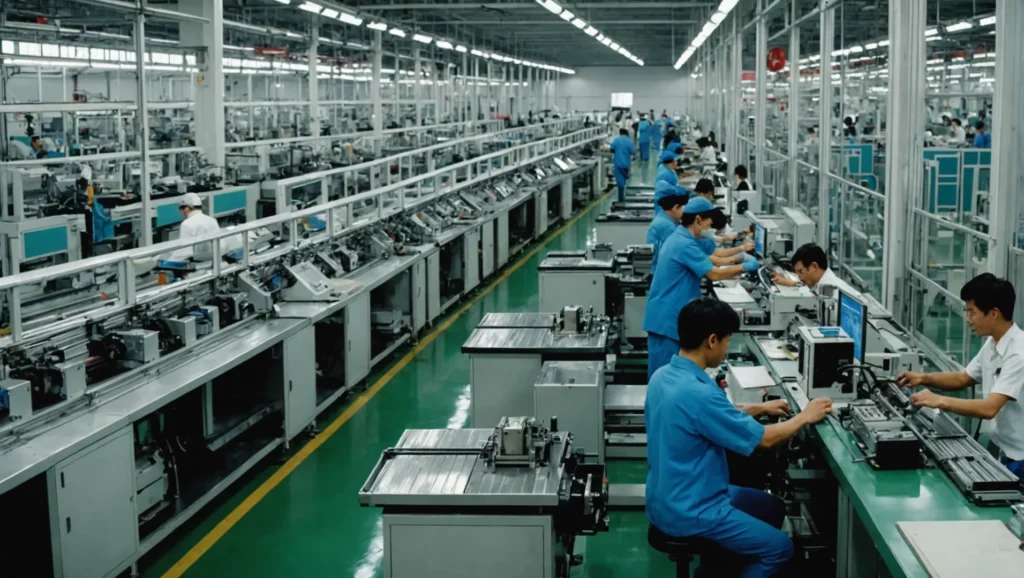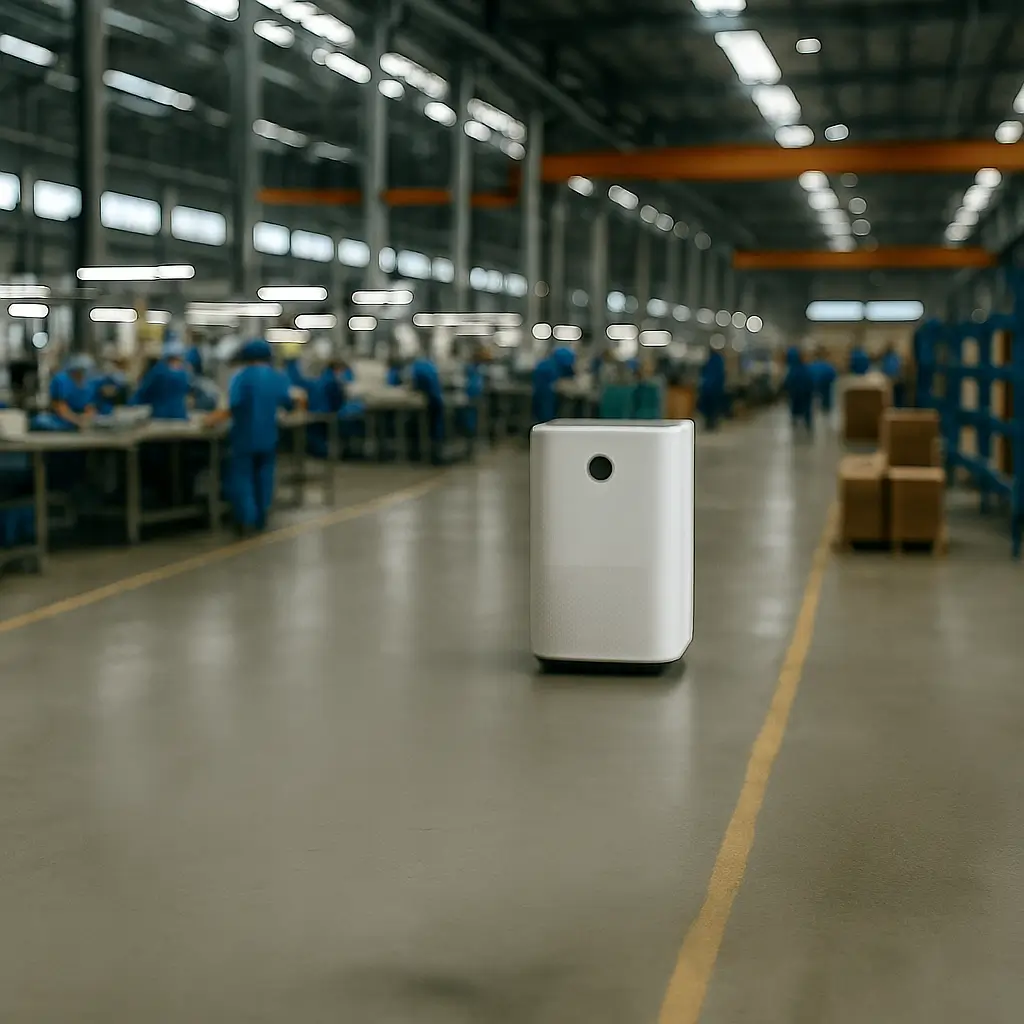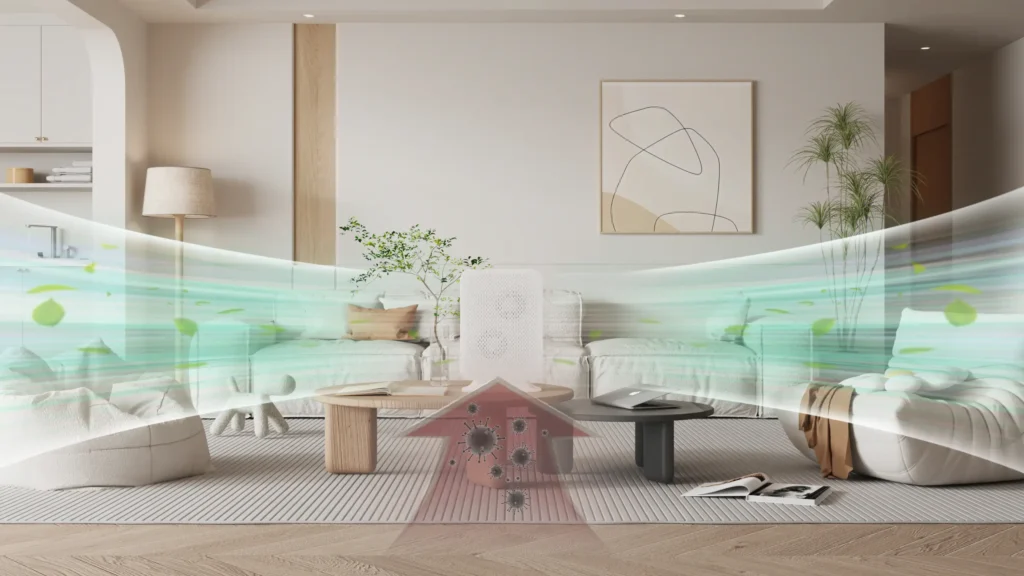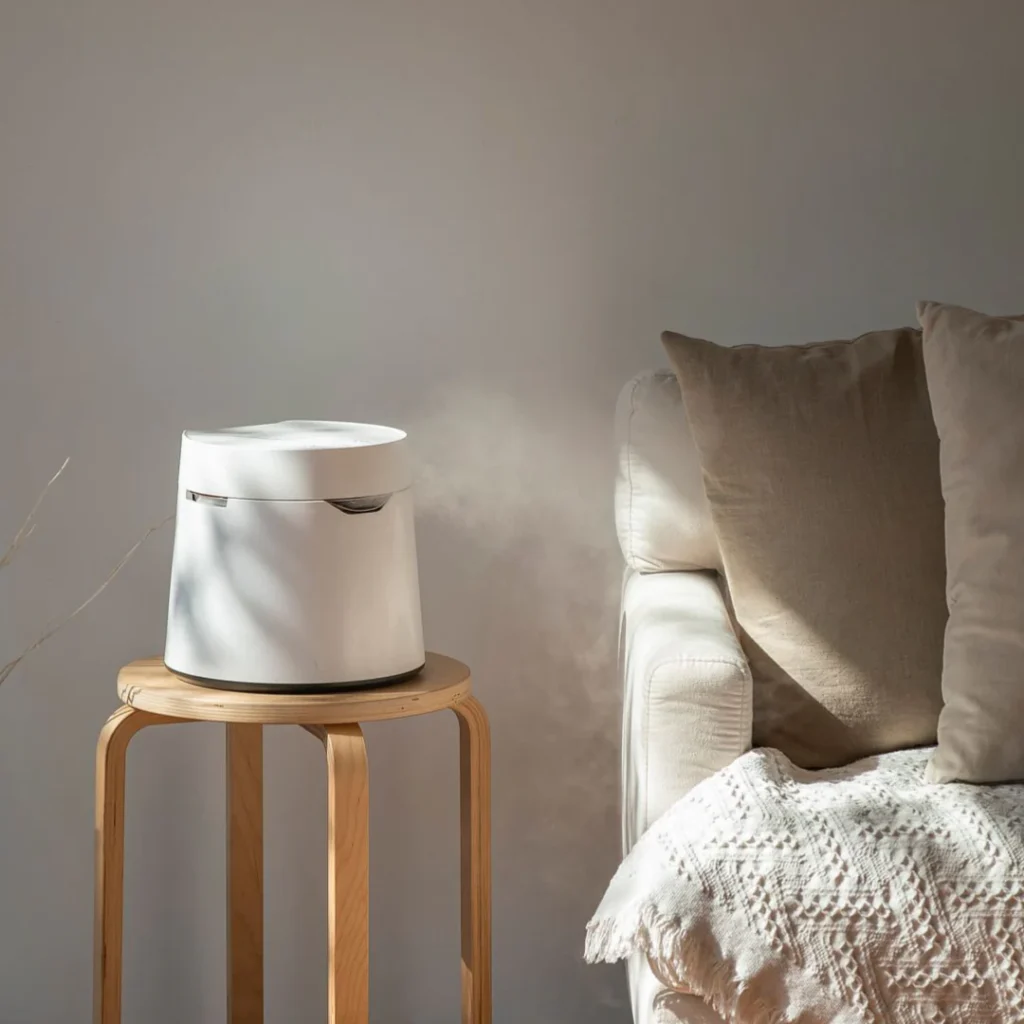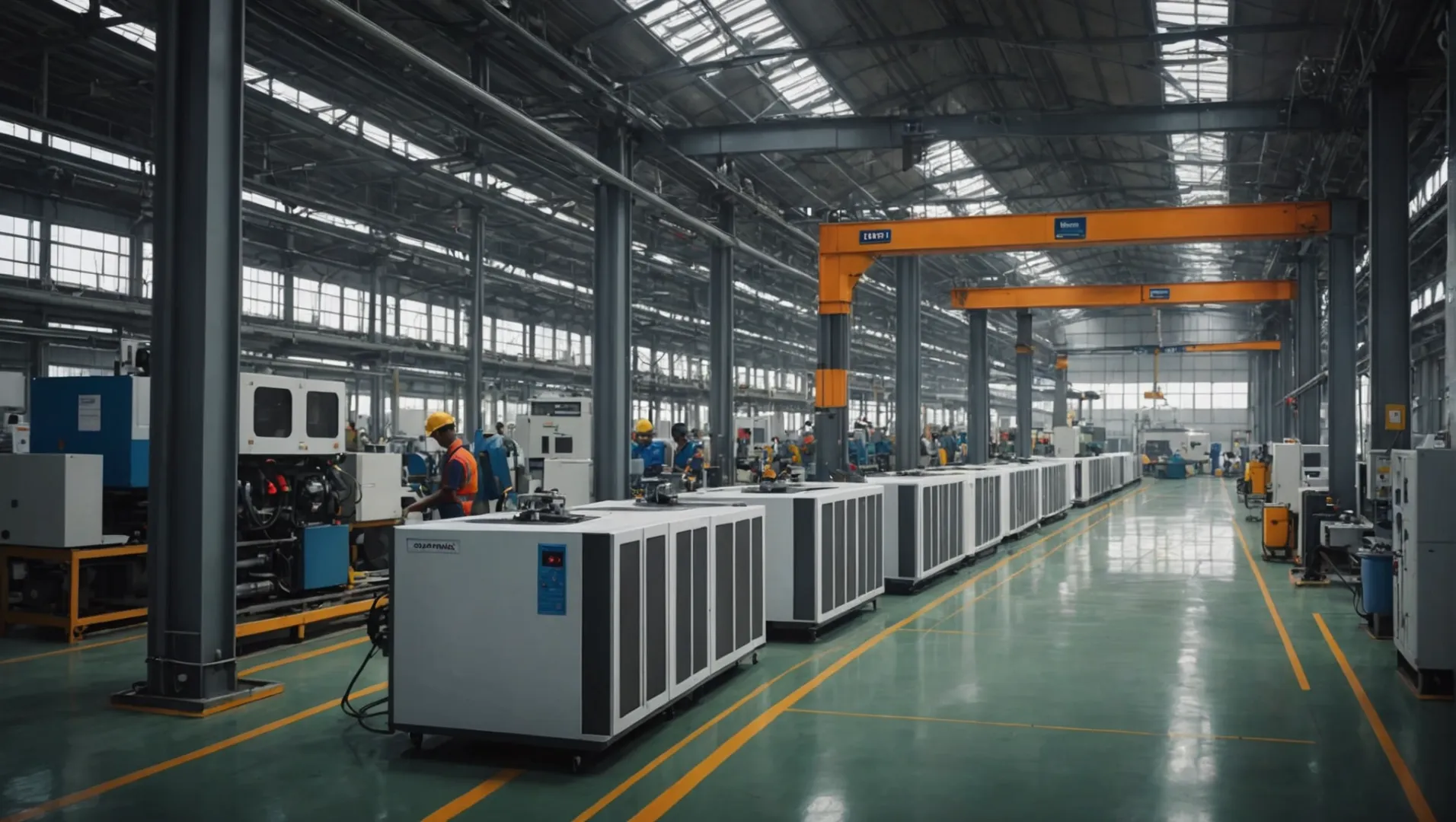
O ar que respiramos é mais do que uma necessidade; é um elemento crucial do nosso bem-estar. Com o aumento da consciencialização global sobre a qualidade do ar, a indústria dos purificadores de ar está a prosperar como nunca antes.
A China lidera a produção de purificadores de ar devido à sua sólida cadeia de abastecimento e à sua longa experiência de fabrico. No entanto, a presença da Índia está a crescer, impulsionada por novas fábricas de montagem que utilizam materiais importados da China para satisfazer a procura crescente e contornar os direitos aduaneiros.
Compreender a dinâmica da produção de purificadores de ar entre a China e a Índia oferece informações valiosas tanto para as empresas como para os consumidores. Aprofunde-se para descobrir as vantagens competitivas, as estratégias de mercado e as perspectivas futuras que moldam o panorama desta indústria.
A China é líder mundial na produção de purificadores de ar.Verdadeiro
A extensa cadeia de abastecimento e a experiência de fabrico da China fazem dela um líder.
O que faz da China um ator dominante no fabrico de purificadores de ar?
O domínio da China no fabrico de purificadores de ar assenta na sua extensa cadeia de abastecimento e na sua experiência.
A China destaca-se no fabrico de purificadores de ar devido à sua cadeia de abastecimento abrangente, tecnologia avançada e vasta experiência, tornando-a o principal centro global.
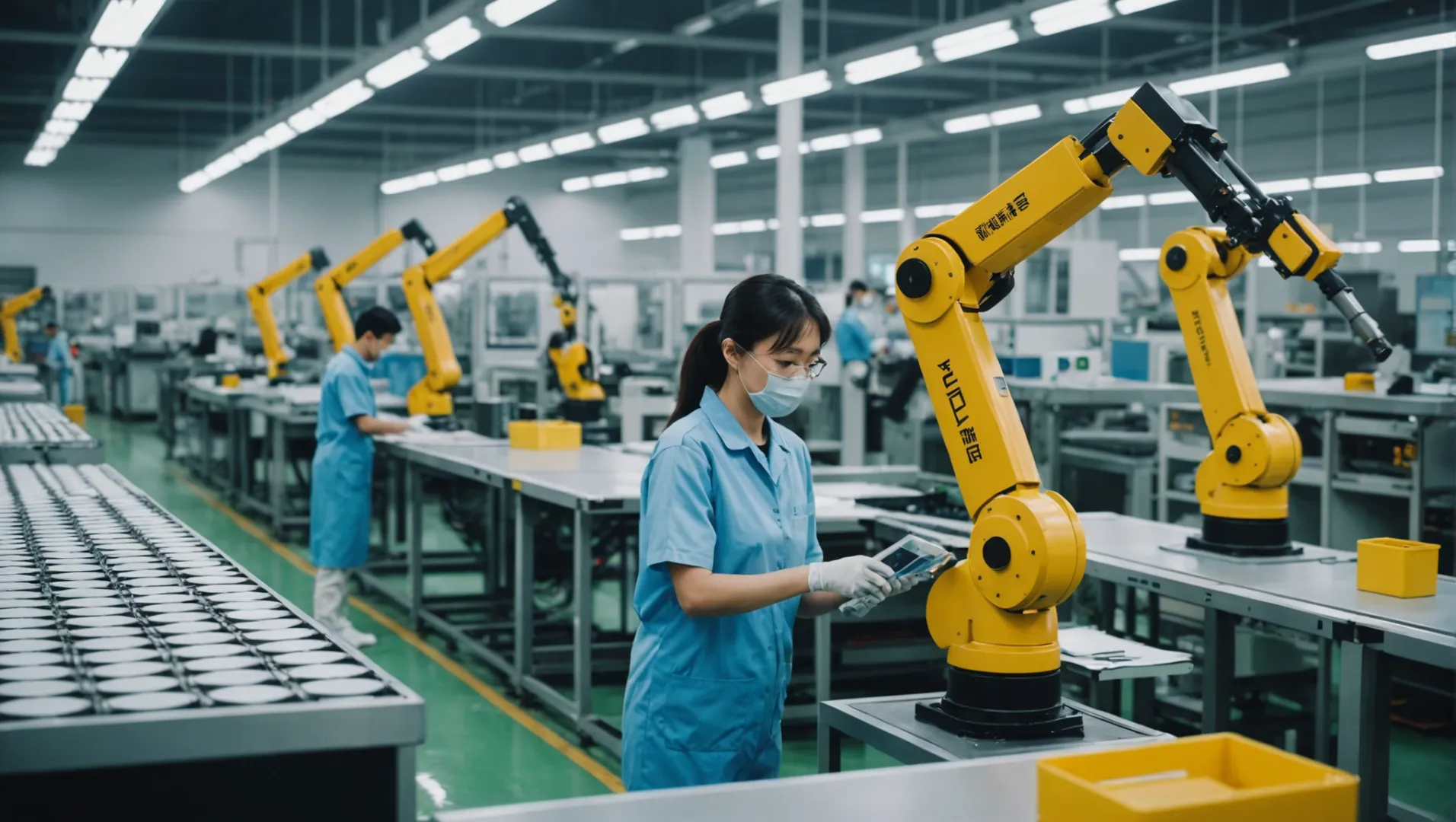
Extensa infraestrutura da cadeia de fornecimento
Uma das principais razões pelas quais a China garantiu o seu lugar como líder no fabrico de purificadores de ar é a sua infraestrutura de cadeia de fornecimento bem estabelecida. Ao longo de décadas, a China desenvolveu uma rede de fornecedores que fornecem tudo, desde matérias-primas a tecnologia de ponta. Esta abordagem integrada permite aos fabricantes manter os custos baixos e a produção eficiente. Para as empresas, isto significa que podem beneficiar de preços competitivos e ciclos de produção rápidos, essenciais num mercado global de ritmo acelerado.
Capacidades de fabrico avançadas
A China investiu fortemente em tecnologias e instalações de fabrico, garantindo o cumprimento de normas de produção de alta qualidade. O país tornou-se sinónimo de inovação e escalabilidade1A China é o maior produtor mundial de purificadores de água, oferecendo uma gama de produtos que vai desde modelos económicos a purificadores topo de gama com a mais recente tecnologia. Estas capacidades não só satisfizeram as necessidades domésticas, como também serviram os mercados globais, consolidando ainda mais o domínio da China.
Posicionamento estratégico no mercado
O posicionamento estratégico dos fabricantes chineses permite-lhes satisfazer as diferentes exigências a nível mundial. Ao compreenderem as necessidades dos consumidores nas diferentes regiões, as empresas chinesas podem adaptar os seus produtos, oferecendo caraterísticas como a filtragem HEPA e a conetividade inteligente. Esta adaptabilidade é crucial, uma vez que os consumidores estão cada vez mais conscientes das questões relacionadas com a qualidade do ar.
Experiência de longa data
A experiência é importante na indústria transformadora, e a China tem anos de experiência. A experiência do país reflecte-se na sua capacidade de inovar e de se adaptar rapidamente às mudanças na dinâmica do mercado. Esta experiência de longa data significa que os fabricantes chineses podem antecipar eficazmente as tendências e necessidades do mercado. Como resultado, mantêm uma vantagem competitiva sobre os actores emergentes como a Índia.
Desafios e oportunidades
Apesar destes pontos fortes, existem desafios, como os direitos aduaneiros internacionais e as preocupações ambientais, que os fabricantes chineses têm de ultrapassar. No entanto, estes desafios também apresentam oportunidades de diversificação para outras regiões e mercados.
Em suma, a China posição dominante no fabrico de purificadores de ar2 pode ser atribuída à sua cadeia de fornecimento abrangente, tecnologias avançadas e décadas de experiência que, em conjunto, criam uma presença formidável no mercado global.
A cadeia de abastecimento da China mantém os custos dos purificadores de ar baixos.Verdadeiro
A cadeia de abastecimento integrada da China permite uma produção eficaz em termos de custos.
A China não dispõe de tecnologias avançadas de fabrico de purificadores.Falso
A China investiu fortemente em tecnologias de fabrico avançadas.
Como é que o mercado indiano de purificadores de ar está a evoluir?
O mercado indiano de purificadores de ar está à beira da transformação, impulsionado por mudanças estratégicas.
O mercado indiano de purificadores de ar está a evoluir através de operações de montagem estratégicas que utilizam componentes importados, com o objetivo de ultrapassar as barreiras pautais e satisfazer a procura nacional e internacional.
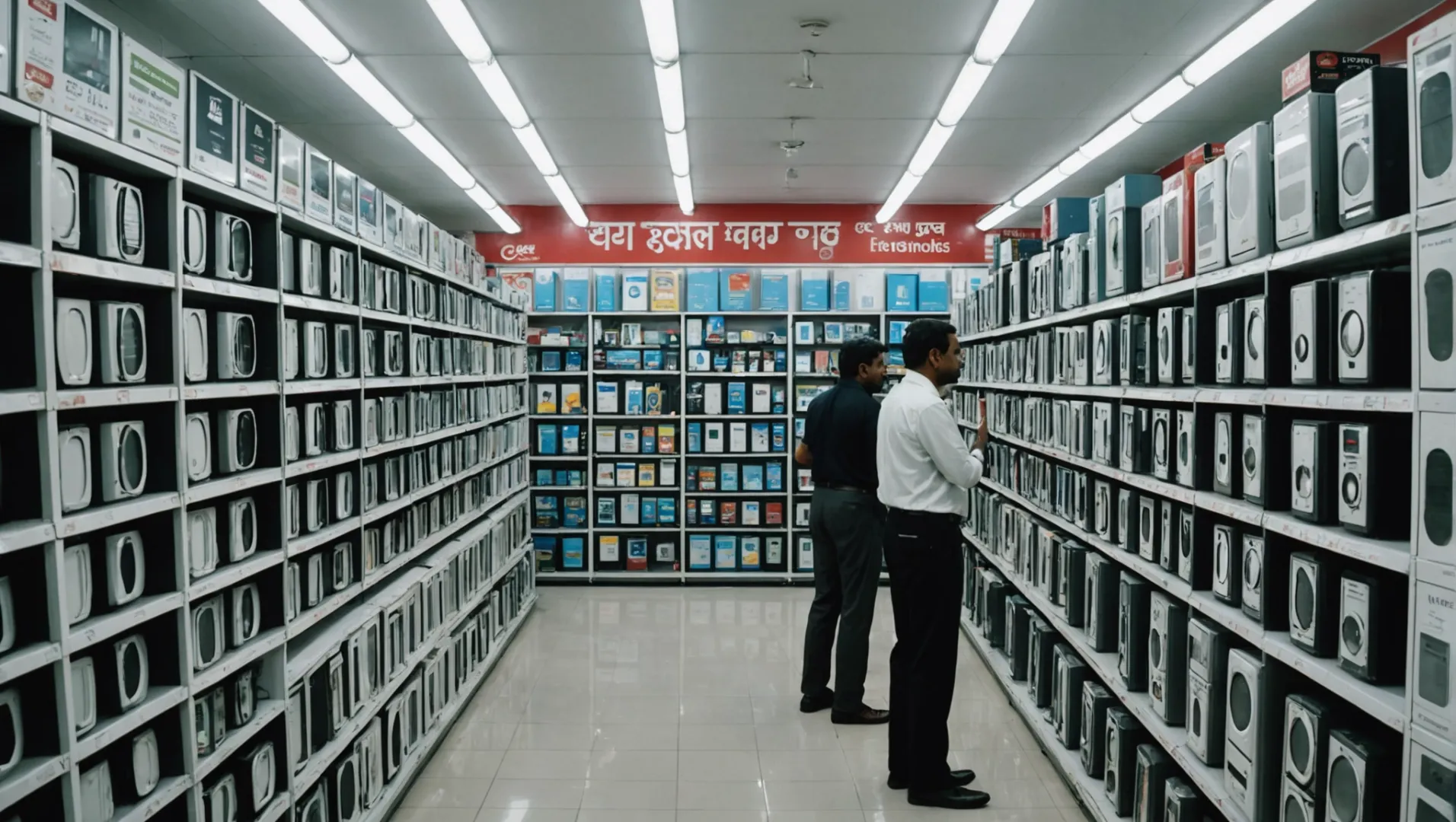
Aumento da procura interna
O aumento dos níveis de poluição atmosférica nas cidades indianas conduziu a um aumento significativo da procura de purificadores de ar. À medida que aumenta a sensibilização para a saúde e o bem-estar, mais famílias urbanas estão a investir nestes aparelhos. Esta procura crescente não só está a impulsionar as vendas como também a atrair fabricantes estrangeiros para explorarem oportunidades na Índia.
Operações estratégicas de montagem
Para contornar os elevados direitos de importação, várias empresas estão a adotar a tecnologia Semi-Knocked Down (SKD). Esta abordagem implica a importação de componentes-chave de países como a China e a sua montagem a nível nacional. Esta estratégia permite que os fabricantes ofereçam produtos a preços competitivos, promovendo simultaneamente a criação de emprego local e o desenvolvimento de competências. Estas operações estão a preparar o caminho para uma ecossistema de fabrico3.
Iniciativas e apoios governamentais
As iniciativas do governo indiano, como a "Make in India" e as políticas favoráveis ao investimento direto estrangeiro (IDE), estão a incentivar os intervenientes mundiais a estabelecer bases de produção na Índia. Embora o mercado dos purificadores de ar seja atualmente dominado pelas importações, estas políticas poderão conduzir a um aumento da produção local, reduzindo a dependência das importações chinesas.
Vantagem comparativa da Índia
Embora a Índia possa não ser a primeira escolha para a relocalização de unidades de produção em comparação com países do Sudeste Asiático como o Vietname ou a Tailândia, oferece um grande potencial de mercado interno. A presença de uma classe média em expansão com um poder de compra crescente torna a Índia uma perspetiva atractiva para futuros investimentos.
Impacto da dinâmica do comércio internacional
As políticas comerciais internacionais e os direitos aduaneiros influenciam significativamente as estratégias de produção. Com as tarifas sobre as importações chinesas em mercados como os EUA, há uma tendência crescente para a diversificação das bases de produção. A Índia poderá beneficiar destas mudanças, embora gradualmente, uma vez que as empresas procuram atenuar os riscos associados à dependência excessiva de um único país.
Perspectivas futuras
A evolução do mercado indiano de purificadores de ar depende do crescimento contínuo da procura, da implementação eficaz de políticas e dos avanços nas infra-estruturas. À medida que a consciência ambiental aumenta e a tecnologia melhora, o potencial da Índia como ator-chave na indústria global de purificadores de ar poderá registar avanços notáveis.
O mercado indiano de purificadores de ar é impulsionado pelas operações da SKD.Verdadeiro
As operações de SKD ajudam a reduzir os direitos aduaneiros e a impulsionar a produção local.
O mercado indiano de purificadores de ar não é afetado pelas políticas governamentais.Falso
Iniciativas governamentais como a "Make in India" incentivam a produção local.
Que papel desempenham os direitos aduaneiros na definição das estratégias de produção?
Numa era de comércio globalizado, as tarifas influenciam significativamente onde e como os produtos são fabricados.
Os direitos aduaneiros obrigam os fabricantes a reavaliar as suas estratégias de produção, conduzindo frequentemente à deslocalização das fábricas de montagem para regiões mais favoráveis aos direitos aduaneiros. Este realinhamento ajuda a reduzir os custos e a manter preços competitivos nos mercados-alvo.
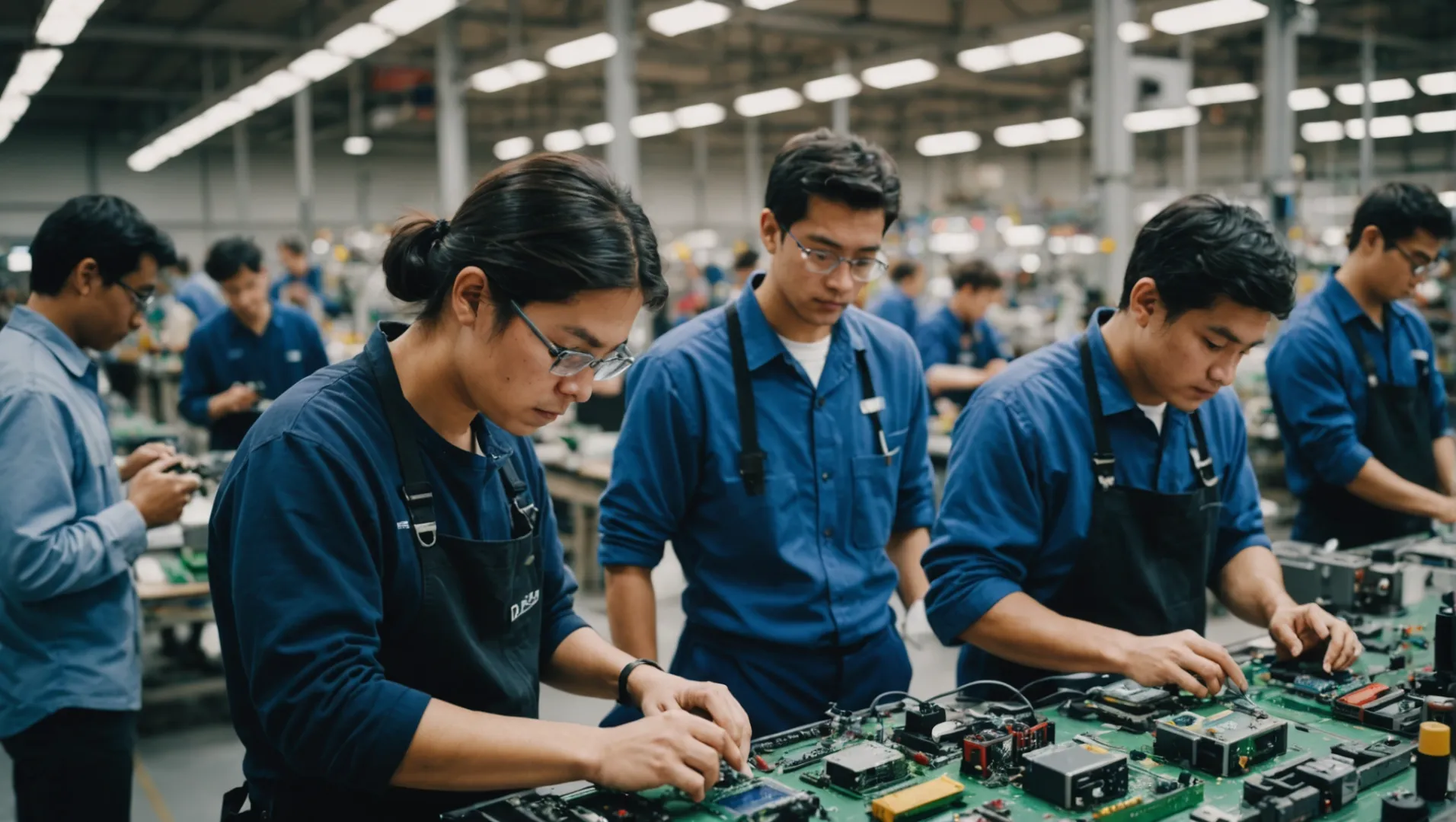
O impacto dos direitos aduaneiros na produção mundial
As tarifas são cruciais para moldar o panorama da indústria transformadora global, influenciando o local onde as empresas optam por produzir os seus produtos. Por exemplo, as elevadas tarifas impostas pelos EUA aos produtos chineses levaram os fabricantes a explorar alternativas fora da China para manter a rentabilidade e evitar aumentos de preços.
Deslocalização e montagem estratégicas
Uma estratégia comum é a deslocalização das operações de montagem para países com condições comerciais mais favoráveis. No sector dos purificadores de ar, as empresas podem optar por semi-destruído (SKD) montagem4 na Índia. Esta abordagem implica a importação de componentes da China e a sua montagem na Índia, reduzindo assim os direitos de importação e melhorando a relação custo-eficácia.
Análise comparativa: Índia vs. Sudeste Asiático
Embora a Índia esteja a tornar-se uma opção viável para SKD devido às suas estruturas pautais, outros países do Sudeste Asiático, como o Vietname, a Malásia e a Tailândia, continuam a ser atractivos devido às suas infra-estruturas estabelecidas e à proximidade da China.
| País | Vantagens | Desafios |
|---|---|---|
| Índia | Tarifas favoráveis, potencial de mercado crescente | Procura limitada no mercado atual |
| Vietname | Logística estabelecida, mais perto da China | Mercado emergente, infra-estruturas ainda em desenvolvimento |
| Malásia | Acordos comerciais sólidos, mão de obra qualificada | Mercado interno mais pequeno do que os outros |
| Tailândia | Setor transformador diversificado | Dinâmica regional competitiva |
Implicações a longo prazo para as estratégias de produção
Como as tarifas continuam a flutuar com base nas políticas comerciais internacionais, os fabricantes devem manter-se ágeis. As estratégias a longo prazo podem envolver a diversificação dos locais de produção e o investimento em países com políticas económicas e acordos comerciais estáveis.
As empresas que conseguirem navegar eficazmente nestes complexos ambientes comerciais manterão a sua vantagem competitiva no mercado global. Compreender esta dinâmica é crucial para as partes interessadas que procuram otimizar as suas estratégias de produção em resposta a cenários tarifários em mutação.
Os direitos aduaneiros conduzem frequentemente à deslocalização das fábricas de montagem.Verdadeiro
Os direitos aduaneiros influenciam os fabricantes a transferirem as suas actividades para regiões mais favoráveis aos direitos aduaneiros.
A Índia é menos favorável do que o Vietname para a montagem de SKD.Falso
A Índia oferece tarifas favoráveis, o que a torna uma localização viável para a SKD.
Existem alternativas viáveis aos purificadores de ar de fabrico chinês?
Preocupadas com as cadeias de abastecimento, muitas pessoas estão a procurar alternativas aos purificadores de ar fabricados na China.
Sim, existem alternativas viáveis aos purificadores de ar de fabrico chinês. Marcas de países como os EUA, Japão, Coreia do Sul e mercados emergentes na Índia oferecem produtos competitivos. Estas alternativas centram-se frequentemente em tecnologias inovadoras, sustentabilidade e necessidades do mercado local, apelando aos consumidores que dão prioridade à qualidade e ao abastecimento ético.
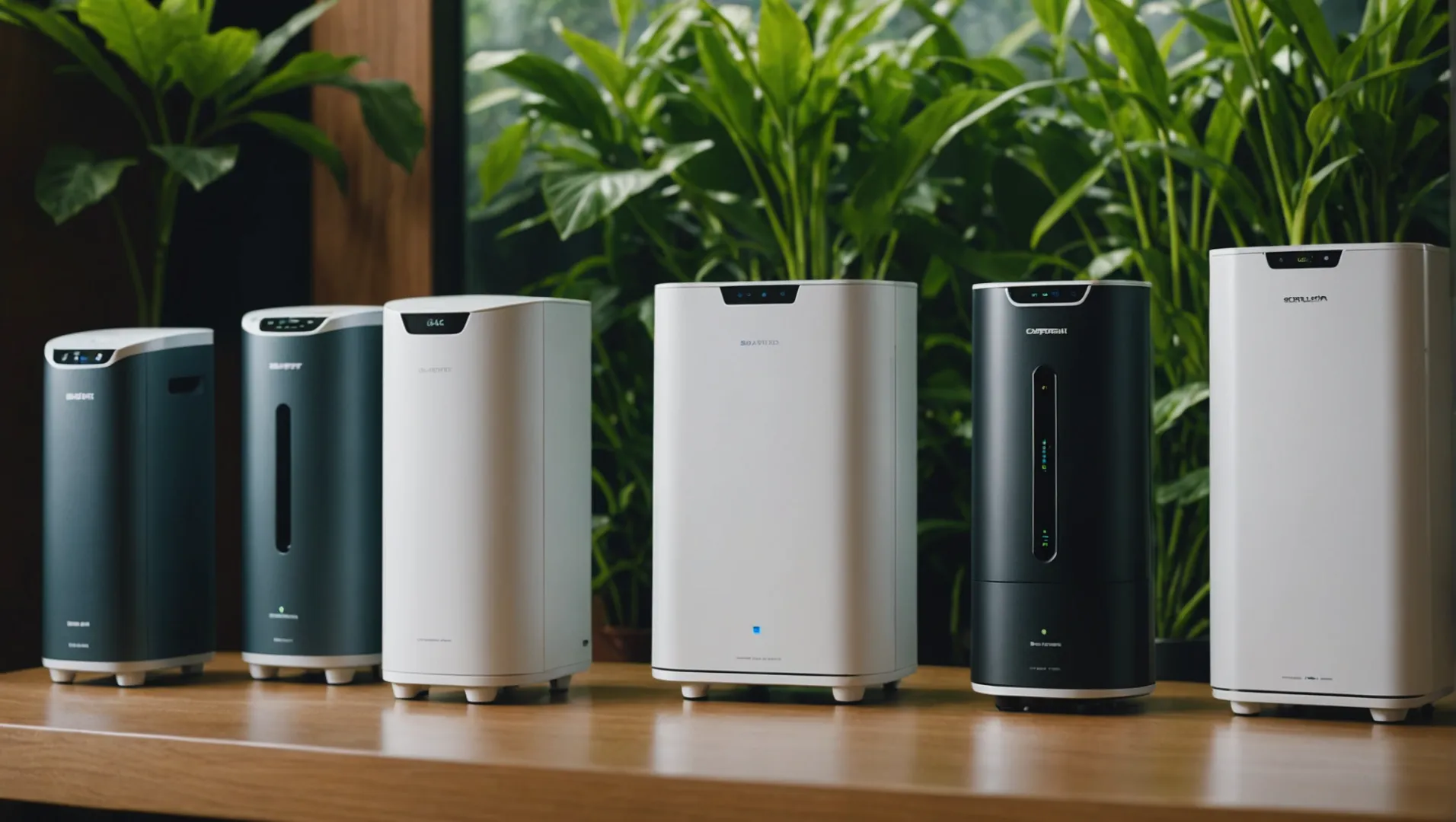
Explorar as marcas globais de purificadores de ar
À medida que o mercado dos purificadores de ar se expande, vários países têm surgido como potenciais alternativas à proeza de fabrico da China. Os Estados Unidos5 e Japão6 são conhecidos pelos seus padrões de produção de alta qualidade e tecnologia inovadora. Estas nações dão prioridade a métodos de filtragem avançados e a caraterísticas inteligentes que satisfazem os consumidores com conhecimentos tecnológicos.
O papel da inovação sul-coreana
A Coreia do Sul deu passos significativos no sector dos electrodomésticos. Marcas como Samsung7 e LG8 oferecem purificadores de ar que integram IoT (Internet das Coisas), permitindo aos utilizadores monitorizar a qualidade do ar remotamente através de smartphones. Estas inovações apelam a um mercado crescente de consumidores nativos digitais que procuram uma integração perfeita nas suas casas inteligentes.
O papel emergente do mercado indiano
Embora a Índia ainda esteja a desenvolver a sua produção doméstica de purificadores de ar, é um centro de montagem promissor para as marcas internacionais que procuram capitalizar as tarifas e os custos de produção mais baixos. A estratégia de importação de componentes da China para montagem na Índia, conhecida como SKD (Semi Knocked Down), permite uma distribuição económica no mercado dos EUA devido à redução das tarifas de importação. À medida que esta tendência cresce, os consumidores podem esperar opções mais económicas com um desempenho comparável ao dos modelos chineses.
Sustentabilidade e produção ética
Os consumidores dão cada vez mais prioridade à sustentabilidade, impulsionando a procura de purificadores de ar ecológicos e produzidos de forma ética. As empresas na Europa estão a liderar esta tendência, concentrando-se em materiais sustentáveis e em designs energeticamente eficientes. Estas práticas não só apelam aos consumidores ambientalmente conscientes, como também se alinham com os objectivos globais de sustentabilidade.
Qualidade vs. Custo: O que é que os consumidores devem considerar?
Ao avaliar as alternativas, os consumidores devem ponderar factores como a longevidade do produto, a eficiência energética, os custos de substituição do filtro e o serviço pós-venda. Embora as marcas não chinesas possam ter um preço mais elevado, oferecem frequentemente garantias e apoio ao cliente superiores.
Em resumo, embora a China continue a ser uma força dominante no fabrico de purificadores de ar, existem alternativas viáveis em todo o mundo. Estas alternativas vão ao encontro das diferentes preferências dos consumidores, desde a tecnologia de ponta às práticas sustentáveis.
Os purificadores de ar dos EUA são conhecidos pelas suas caraterísticas inteligentes.Verdadeiro
As marcas americanas centram-se na filtragem avançada e na tecnologia inteligente.
A Índia exporta purificadores de ar totalmente montados para todo o mundo.Falso
A Índia monta purificadores de ar utilizando o método SKD para distribuição local.
Conclusão
Enquanto a China continua a ser uma potência na produção de purificadores de ar, o potencial da Índia está a crescer. À medida que as exigências do mercado e as tarifas evoluem, manter-se atento a estas mudanças pode informar decisões de compra mais inteligentes.
-
Explore os avanços da China na tecnologia de fabrico e os benefícios da escalabilidade..: A China atingiu uma nova fase no seu desenvolvimento económico, com capacidades de inovação muito maiores nas suas universidades e empresas nacionais. ↩
-
Entenda por que a China lidera a produção mundial de purificadores de ar..: Atualmente, a China lidera a produção de purificadores de ar, com eficiência de custo superior, capacidade de produção e pesquisa e desenvolvimento ... ↩
-
Explore a forma como as operações SKD aumentam a eficiência dos custos e o emprego local..: A SKD é um meio-termo entre a CKD e a CBU e exige um pouco menos de trabalho do que a CKD, ou seja, os testes e as etapas de controlo de qualidade são reduzidos. ↩
-
Saiba como a montagem SKD ajuda a reduzir os custos de produção..: Um veículo em pleno funcionamento é completo, construído numa fábrica no país de origem, antes de ser transportado para uma oficina onde é desmontado ou ... ↩
-
Explore as principais marcas dos EUA conhecidas pela tecnologia inovadora de purificação do ar..: Na minha pesquisa, encontrei repetidamente Molekule, Blueair e Levoit recomendados como as melhores opções da sua classe. Por isso, experimentei as três. Abaixo, estou a dar as informações sobre ... ↩
-
Descubra como as marcas japonesas se destacam na inovação da purificação do ar..: Purificador de ar Sharp FU-L30-W Plasma Cluster 7000 - Modelo mais recente - Vírus Pólen 10 Área Tatami - Branco. Preço normal: $340.00. Preço de venda: $340.00 Venda. ↩
-
Saiba mais sobre os recursos inteligentes da Samsung em seus purificadores de ar..: Muitos de nossos purificadores de ar contêm sistemas inovadores de filtragem HEPA que removem 99,97% de 0,3㎛ de poeira ultrafina, obstruem a propagação de bactérias capturadas, ... ↩
-
Compreender a abordagem da LG à integração da IoT nos purificadores de ar..: Funcionamento silencioso. Com níveis de ruído tão baixos quanto 23dB, o Smart Inverter da LG limpa o ar enquanto mantém o seu espaço tranquilo e silencioso. Design amigo das crianças ... ↩



